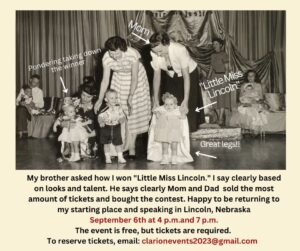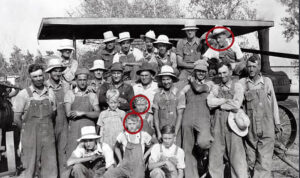Lori Borgman | July 31, 2023
A friend served zucchini with dinner the other night and her 10-year-old exclaimed, “Oh no, it’s zucchini season!”
The kid is right. And know this: You can run, but you can’t hide.
Gardeners flush with zucchini all adhere to the same mantra: “What’s mine is yours.” They will do whatever it takes to make sure what is theirs becomes yours.
We’ve never grown zucchini because we’ve never had to. If we want zucchini, we just stand by the curb and hold out our arms. Nine out of 10 cars will roll down their windows and toss out some zucchini. The neighbors refer to it as a drive-by zuke-ing.
You know this year’s zucchini surplus is extreme when a nearby zoo announces they will continue accepting garden produce for the animals, but please, no more zucchini.
When a neighbor was in in grad school, an international student from Lebanon asked if it was an American tradition to take tomatoes and zucchini when you visit someone.
It is.
Case in point: An older gentleman and seasoned gardener would take home-grown tomatoes along with zucchini with him whenever he visited friends. You couldn’t have any tomatoes unless you agreed to take some zucchini.
Who could blame him? Zucchinis are the vegetable equivalent of plastic food storage containers that multiply in the dark.
Some of our kids are big gardeners and often text photos of their daily harvest. In their last picture I counted 20 zucchinis.
We texted a picture back of our daily harvest. Six peas. We thought maybe they’d take pity on us and have Door Dash deliver a meal.
We’d starve to death if we had to survive on peas. Even if we rationed them, we wouldn’t make it.
“Here, have a pea,” I tell my husband at dinner.
“I had one yesterday. It’s your turn. You eat it.”
“No, you—” and he drops to the floor midsentence from hunger.
Our green beans aren’t as prolific as other gardeners’ zucchini, but they have done better than the peas. I picked 12 green beans the other day. We had three each. I’d read green beans were good cooked on the grill. I was careful turning them, but they kept falling between the grates.
Do not, I repeat, do not try retrieving a green bean wedged between white hot charcoal with tongs.
Zucchinis are popular because they are low cal and healthy. But they also top the list of vegetables often requiring enhancement before consuming. Zucchini bread, zucchini waffles, zucchini muffins, zucchini with parm, zucchini with garlic butter, zucchini bacon and cheese boats. Zucchinis are low cal—when they’re still on the vine.
Maybe you heard about the woman who left a zucchini in her car while she went shopping. When she returned, someone had broken in and left her six more.
Lock your vehicles and keep your guard up. You can never be too careful.
THE COUNTDOWN TO SEPT. 6, LINCOLN, NEBRASKA
(where it all began a long, long, long, long time ago)
The event is free, but tickets are required. Reserve tickets now at: clarionevents2023@gmail.com
















